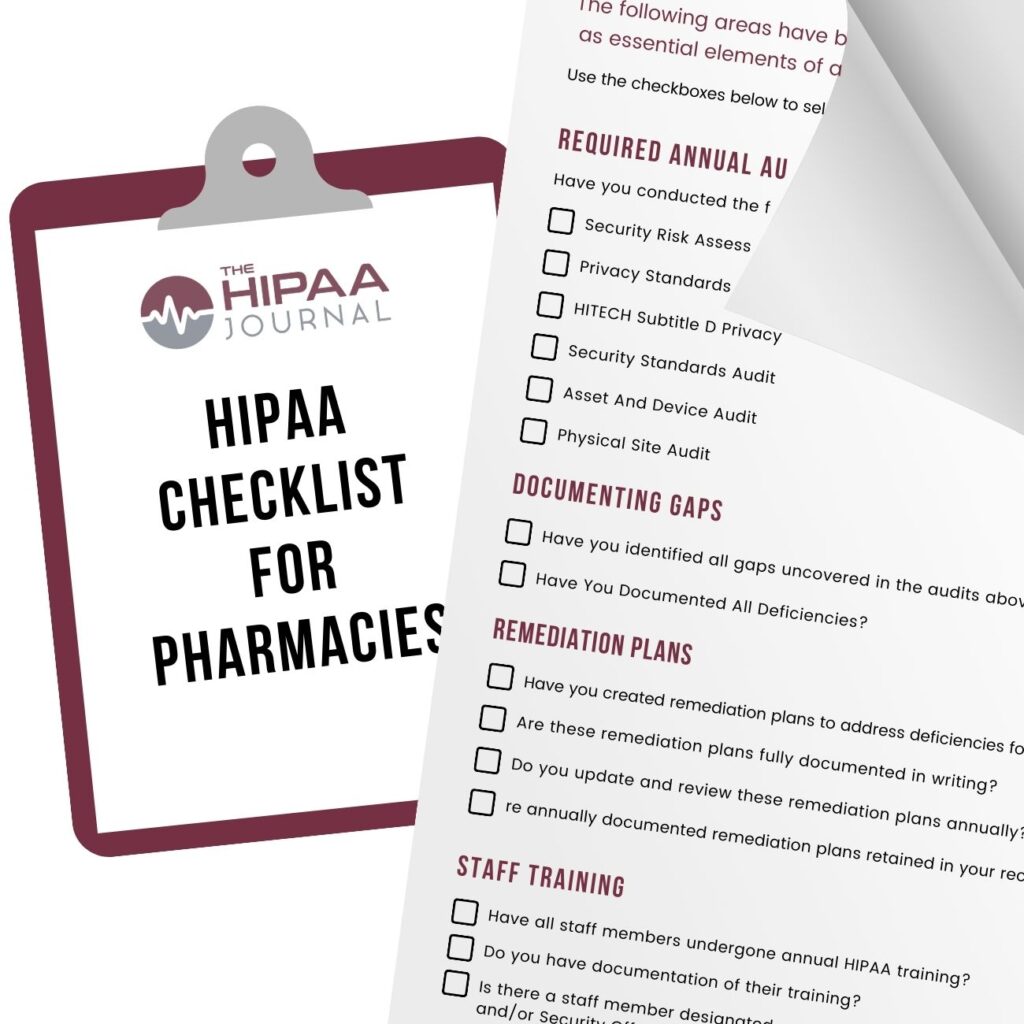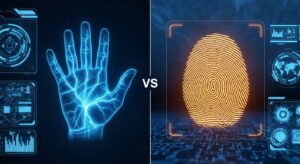In today’s digital age, securing patient data is crucial. HIPAA compliant biometric devices ensure that sensitive information stays protected.
Biometric devices are becoming more popular in healthcare settings. These devices use unique physical traits to verify identities. HIPAA compliance means they follow strict standards to protect patient data. This is important because health records are a prime target for hackers.
With these devices, healthcare providers can improve security and protect patient privacy. This blog will explore the significance of HIPAA compliant biometric devices. We’ll discuss how they work and why they matter in healthcare. Understanding these devices can help you make informed choices about patient data security. Let’s dive into the world of secure biometric technology.
Introduction To HIPAA
HIPAA Compliant Biometric Devices have become essential in the healthcare industry. These devices ensure that sensitive patient information remains protected. The Health Insurance Portability and Accountability Act (HIPAA) plays a crucial role in this. Understanding HIPAA is vital for anyone dealing with patient data. Let’s dive into what HIPAA is and why compliance is important.
What Is HIPAA ?
HIPAA stands for the Health Insurance Portability and Accountability Act. Enacted in 1996, it aims to protect patient information. This federal law sets standards for data privacy and security.
HIPAA has several key components:
- Privacy Rule: Protects the privacy of individuals’ health information.
- Security Rule: Sets standards for securing electronic protected health information (ePHI).
- Enforcement Rule: Outlines penalties for HIPAA violations.
- Breach Notification Rule: Requires covered entities to notify affected individuals after a data breach.
HIPAA applies to:
- Healthcare providers
- Health plans
- Healthcare clearinghouses
- Business associates of covered entities
These rules ensure that patient data is handled responsibly. Non-compliance can lead to severe penalties.
Importance Of HIPAA Compliance
Compliance with HIPAA is not just a legal requirement. It has several benefits:
- Protects Patients: Ensures the confidentiality and security of patient data.
- Builds Trust: Patients trust healthcare providers with their sensitive information.
- Avoids Penalties: Non-compliance can result in hefty fines and legal action.
- Improves Data Management: Encourages better data handling and security practices.
HIPAA compliance involves:
| Action | Description |
|---|---|
| Risk Analysis | Identify potential risks to ePHI and take action to mitigate them. |
| Training | Provide regular training for employees on HIPAA regulations and data security practices. |
| Policies and Procedures | Develop and implement written policies and procedures to comply with HIPAA standards. |
Compliance is an ongoing process. It requires continuous monitoring and improvement. By adhering to HIPAA, healthcare organizations can protect their patients and themselves.
Biometric Devices Explained
HIPAA compliant biometric devices are essential for maintaining the security and privacy of sensitive health information. These devices use unique biological traits to verify identities, ensuring only authorized individuals can access protected data. Understanding how these devices work and the different types available can help healthcare providers choose the right solution for their needs.
Types Of Biometric Devices
Biometric devices come in various forms, each leveraging a unique biological trait to authenticate users. Here are some common types:
- Fingerprint Scanners: These devices capture the unique patterns of an individual’s fingerprint. They are widely used due to their accuracy and ease of use.
- Facial Recognition Systems: These systems analyze facial features such as the distance between the eyes, nose width, and jawline shape. They are popular in smartphones and security systems.
- Retina Scanners: Retina scanners map the unique pattern of blood vessels in the back of the eye. They offer high accuracy but can be invasive.
- Iris Scanners: These devices scan the colored ring around the pupil. They are less intrusive than retina scanners and still provide high security.
- Voice Recognition: Voice recognition systems analyze vocal patterns. They can be used in phone systems and smart home devices.
- Hand Geometry Readers: These devices measure the shape and size of a person’s hand. They are less common but still used in some security systems.
| Device Type | Accuracy | Common Use |
|---|---|---|
| Fingerprint Scanner | High | Smartphones, Laptops |
| Facial Recognition | Medium | Smartphones, Security Systems |
| Retina Scanner | Very High | High-Security Areas |
| Iris Scanner | High | Border Control, Security Systems |
| Voice Recognition | Medium | Smart Home Devices |
| Hand Geometry Reader | Low | Access Control Systems |
How Biometric Devices Work
Biometric devices work by capturing and analyzing unique biological traits. The process generally involves three main steps:
- Enrollment: During enrollment, the device captures a user’s biometric data. This data is then stored in a secure database. For example, a fingerprint scanner will capture the unique ridge patterns of a finger.
- Storage: The captured data is stored securely. It is often encrypted to protect it from unauthorized access. This step ensures that even if the data is intercepted, it cannot be easily read or used.
- Verification: When a user attempts to access a system, the device captures their biometric data again. It then compares this new data to the stored data. If the data matches, access is granted. If not, access is denied.
Biometric devices use complex algorithms to ensure high accuracy. For instance, fingerprint scanners use minutiae-based matching, which examines the specific points where ridges end or split. Facial recognition systems use 3D mapping and infrared scanning to detect and analyze facial features.
These devices are designed to be user-friendly. Most require minimal interaction from users, making them convenient for everyday use. Additionally, they offer a higher level of security compared to traditional password-based systems.
Overall, biometric devices provide a secure and efficient way to protect sensitive information, especially in healthcare settings where compliance with HIPAA regulations is critical.
HIPAA Regulations For Biometric Data
Biometric devices are becoming more common in healthcare. They help in identifying and authenticating patients. But using these devices involves collecting sensitive data. This is where HIPAA regulations come into play. HIPAA ensures that biometric data is handled with care. Let’s explore the HIPAA regulations for biometric data.
Protected Health Information (phi)
Protected Health Information, or PHI, includes any data related to health. This includes biometric data like fingerprints, facial recognition, and retina scans. HIPAA treats this information with high importance.
PHI includes:
- Patient names
- Medical record numbers
- Biometric identifiers
Biometric data falls under PHI because it can identify a person. It needs to be protected from unauthorized access. HIPAA has strict rules for this.
| Type of Data | Example |
|---|---|
| Fingerprint | Used for login authentication |
| Facial Recognition | Used in patient identification |
| Retina Scan | Used in secure areas access |
Healthcare providers must follow HIPAA guidelines. This includes storing biometric data securely. They must ensure only authorized personnel can access it. Regular audits and checks are necessary to maintain compliance.
Security Rules For Biometric Data
HIPAA’s Security Rule sets standards for protecting electronic PHI (e-PHI). This includes biometric data. The Security Rule has three main parts:
- Administrative Safeguards
- Physical Safeguards
- Technical Safeguards
Administrative safeguards involve policies and procedures. This includes training staff and managing access controls.
Physical safeguards protect the physical hardware. This includes locking devices and securing areas where data is stored.
Technical safeguards focus on technology. This includes encryption and secure access protocols.
| Safeguard Type | Example |
|---|---|
| Administrative | Staff training programs |
| Physical | Securing devices in locked areas |
| Technical | Using encryption for data transfer |
Healthcare providers must implement these safeguards. This ensures biometric data remains secure. Regular reviews and updates to these safeguards are also essential. This keeps up with evolving security threats.
Choosing Compliant Devices
HIPAA compliant biometric devices ensure that sensitive health information remains secure. Choosing the right device is crucial for maintaining compliance with HIPAA regulations. This guide will help you understand what to look for in a compliant device and how to select the best vendor.
Features Of Compliant Devices
HIPAA compliant biometric devices have specific features that make them suitable for handling protected health information (PHI). Below are key features to consider:
- Data Encryption: Devices should encrypt data both in transit and at rest to prevent unauthorized access.
- User Authentication: Multi-factor authentication (MFA) adds an extra layer of security, ensuring that only authorized users can access PHI.
- Audit Trails: The device should create and maintain detailed logs of user access and actions for auditing purposes.
- Compliance Certifications: Look for devices with certifications like FIPS 140-2, which indicates a high standard of data security.
- Data Minimization: The device should only collect the minimum necessary data to perform its function, reducing the risk of data breaches.
Consider the following table summarizing the features:
| Feature | Description |
|---|---|
| Data Encryption | Encrypts data in transit and at rest |
| User Authentication | Uses multi-factor authentication |
| Audit Trails | Maintains logs of user access and actions |
| Compliance Certifications | Certifications like FIPS 140-2 |
| Data Minimization | Collects only necessary data |
Vendor Considerations
Choosing the right vendor is as important as selecting the right device. Here are some factors to consider:
- Reputation: Select vendors with a proven track record in providing HIPAA compliant devices.
- Support Services: Ensure the vendor offers robust customer support, including setup and troubleshooting assistance.
- Compliance Expertise: Vendors should be knowledgeable about HIPAA regulations and how their devices help maintain compliance.
- Customization Options: The ability to customize devices to meet specific needs can be crucial for compliance.
- Cost: While cost is a factor, it should not compromise the quality and compliance features of the device.
Here is a table to summarize the vendor considerations:
| Consideration | Details |
|---|---|
| Reputation | Proven track record in HIPAA compliance |
| Support Services | Robust customer support |
| Compliance Expertise | Knowledgeable about HIPAA regulations |
| Customization Options | Ability to customize devices |
| Cost | Balanced with quality and compliance |
By considering these features and vendor aspects, you can choose a HIPAA compliant biometric device that meets your security and compliance needs.
Data Encryption And Security
HIPAA compliant biometric devices are essential for protecting sensitive patient information. They use unique physical characteristics like fingerprints and facial recognition to verify identity. But security doesn’t stop there. Data encryption and security are vital to ensure patient data remains confidential and safe from unauthorized access.
Importance Of Encryption
Encryption is the process of converting data into a code to prevent unauthorized access. For HIPAA compliant biometric devices, encryption is essential. Here’s why encryption matters:
- Protects Patient Data: Encrypting data ensures that even if it is intercepted, it cannot be read without the decryption key.
- Maintains Trust: Patients trust healthcare providers with their sensitive information. Encryption helps maintain this trust.
- Compliance: HIPAA regulations require that patient data is encrypted to ensure its security.
Consider this table illustrating the benefits of encryption:
| Benefit | Description |
|---|---|
| Security | Prevents unauthorized access to data. |
| Trust | Maintains patient confidence in data protection. |
| Compliance | Meets HIPAA requirements for data security. |
Encryption isn’t just a technical measure. It is a fundamental part of protecting patient privacy and maintaining the integrity of healthcare systems.
Implementing Security Measures
Implementing security measures for HIPAA compliant biometric devices involves several steps:
- Regular Updates: Ensure all software is updated regularly to protect against vulnerabilities.
- Strong Passwords: Use strong passwords and change them regularly.
- Two-Factor Authentication (2FA): Use 2FA to add an extra layer of security.
- Access Controls: Limit access to data based on user roles.
- Audit Trails: Maintain logs of access and changes to data.
Consider the following table showing common security measures:
| Security Measure | Purpose |
|---|---|
| Regular Updates | Protect against new vulnerabilities. |
| Strong Passwords | Prevent unauthorized access. |
| Two-Factor Authentication | Add an extra layer of security. |
| Access Controls | Limit data access based on roles. |
| Audit Trails | Track data access and changes. |
Implementing these security measures helps ensure that biometric data remains secure. This protects patient information and helps healthcare providers comply with HIPAA regulations.

Credit: scikiq.com
Challenges In Compliance
HIPAA compliant biometric devices are essential in today’s healthcare landscape. They ensure secure and confidential handling of patient information. Yet, maintaining compliance with HIPAA standards presents several challenges. Understanding these challenges is crucial for effective implementation and management of these devices.
Common Compliance Issues
Ensuring HIPAA compliance involves navigating several common issues. Data encryption is one primary concern. Many biometric devices store sensitive patient data, and encryption is necessary to protect this information from unauthorized access.
Another issue is user authentication. Devices must accurately verify user identities to prevent unauthorized access. This means that the biometric data used (fingerprints, facial recognition) must be reliable and accurate.
Data storage is also a significant concern. Biometric data must be stored securely, often requiring robust security measures such as secure servers and access controls. Any data breaches can result in severe penalties under HIPAA regulations.
Compliance auditing is a critical aspect. Regular audits ensure that the devices and their data handling processes meet HIPAA standards. Missing or inadequate audits can lead to compliance failures.
Some common compliance issues include:
- Inadequate data encryption
- Unreliable user authentication
- Improper data storage
- Lack of regular compliance audits
Risk Management Strategies
Effective risk management strategies are essential for maintaining HIPAA compliance with biometric devices. Implementing strong encryption techniques is a primary strategy. Encrypting biometric data ensures that even if data is intercepted, it remains unreadable to unauthorized users.
Multi-factor authentication adds an extra layer of security. Combining biometric verification with other methods (passwords, tokens) enhances security. This reduces the risk of unauthorized access.
Secure data storage solutions are vital. Using encrypted databases and secure servers can help protect biometric data. Access controls should also be in place to limit who can access this data.
Regular compliance audits and risk assessments help identify potential vulnerabilities. Addressing these vulnerabilities promptly ensures ongoing compliance.
Some effective risk management strategies include:
- Implementing strong encryption techniques
- Using multi-factor authentication
- Ensuring secure data storage solutions
- Conducting regular compliance audits and risk assessments
These strategies can help mitigate risks and maintain HIPAA compliance for biometric devices.
Benefits Of Biometric Authentication
Biometric authentication offers significant advantages, especially for HIPAA compliant biometric devices. These benefits are crucial for ensuring the security and convenience of sensitive information. Below, we explore the key benefits of biometric authentication.
Enhanced Security
Biometric authentication provides a high level of security. It uses unique biological characteristics to verify identity. This makes it hard for unauthorized users to gain access.
Some key security benefits include:
- Unique Identification: Biometric traits like fingerprints and retina patterns are unique to each person. This reduces the risk of impersonation.
- Reduced Risk of Data Breaches: Passwords can be stolen or guessed. Biometric data is much harder to replicate or steal.
- Non-transferable: Unlike passwords or security tokens, biometric data cannot be shared or transferred. This ensures that only the authorized user can access the system.
Biometric systems also offer multi-factor authentication. This means combining biometrics with another form of verification. For example, a fingerprint scan plus a password.
| Security Feature | Benefit |
|---|---|
| Unique Identification | Reduces impersonation risk |
| Reduced Data Breaches | Hard to replicate or steal |
| Non-transferable | Ensures only authorized access |
Overall, these security features make biometric authentication a reliable choice for protecting sensitive information.
User Convenience
Biometric authentication is not just about security. It also offers great user convenience. Users can quickly and easily verify their identity without remembering complex passwords.
Some convenience benefits include:
- Ease of Use: Users can simply scan their fingerprint or retina. This is faster and easier than typing a password.
- Time-saving: Biometric scans are quick. This saves time compared to traditional login methods.
- Always Accessible: Biometric traits are always with the user. There is no need to carry cards or remember passwords.
Biometric devices also integrate well with other systems. For example, smartphones, laptops, and security doors. This creates a seamless user experience across different platforms.
| Convenience Feature | Benefit |
|---|---|
| Ease of Use | Quick and simple login |
| Time-saving | Fast verification process |
| Always Accessible | No need for cards or passwords |
In summary, biometric authentication balances security with user convenience. This makes it an ideal choice for protecting sensitive data while providing a smooth user experience.

Credit: neklo.com
Future Of Biometric Devices
Biometric devices are becoming more common in various industries. These devices use unique physical traits like fingerprints, facial features, and even retina scans for identification. But as technology advances, the need for compliance with regulations like HIPAA (Health Insurance Portability and Accountability Act) becomes crucial. The future of HIPAA compliant biometric devices looks promising and exciting.
Trends In Biometric Technology
Biometric technology is evolving rapidly. Several trends are shaping its future:
- AI Integration: Artificial intelligence is making biometric devices smarter. AI helps in accurate identification and can adapt to new information quickly.
- Multimodal Biometrics: Combining multiple biometric traits like fingerprints and facial recognition increases accuracy. This combination makes it harder for unauthorized access.
- Contactless Biometrics: In a post-pandemic world, contactless methods are gaining popularity. Facial recognition and iris scans reduce the need for physical contact.
- Wearable Biometric Devices: Wearables like smartwatches can now measure vital signs. These devices can authenticate users based on their heart rate or other physiological data.
Let’s look at some examples in a table:
| Trend | Description |
|---|---|
| AI Integration | Enhances accuracy and adaptability |
| Multimodal Biometrics | Combines multiple biometric traits |
| Contactless Biometrics | Reduces the need for physical contact |
| Wearable Devices | Uses physiological data for authentication |
Biometric technology is not just about security. It’s also about convenience. With these trends, the future of biometric devices looks both secure and user-friendly.
Regulatory Changes Ahead
Regulations around biometric devices are evolving too. HIPAA compliance is essential for devices used in healthcare. But other industries are also seeing changes.
Here are some regulatory changes to expect:
- Stricter Data Privacy Laws: New laws are being introduced worldwide. These laws focus on protecting biometric data and ensuring it is not misused.
- Comprehensive Audits: Regular audits will become more common. These audits will check if biometric devices meet all compliance requirements.
- Transparency Requirements: Organizations will need to be transparent about how they use biometric data. Users should know what data is collected and how it is used.
- Enhanced Security Protocols: New security measures will be required. These measures will protect against data breaches and unauthorized access.
Understanding these changes is crucial for organizations. Compliance not only protects users but also builds trust. Here’s a summary:
| Regulatory Change | Impact |
|---|---|
| Stricter Data Privacy Laws | Better protection of biometric data |
| Comprehensive Audits | Ensures compliance with regulations |
| Transparency Requirements | Increases user trust |
| Enhanced Security Protocols | Prevents data breaches |
The future of HIPAA compliant biometric devices depends on staying updated with these regulations. Organizations that adapt quickly will lead the way in secure, compliant biometric technology.

Credit: www.hipaajournal.com
Frequently Asked Questions
What Are HIPAA Compliant Biometric Devices?
HIPAA compliant biometric devices ensure the protection of patient health information. They use advanced security measures to safeguard sensitive data.
Why Use Biometric Devices In Healthcare?
Biometric devices enhance security by using unique biological traits. They prevent unauthorized access to patient information.
How Do Biometric Devices Meet HIPAA Standards?
They meet HIPAA standards by implementing encryption, authentication, and access controls. This ensures the safety of health data.
Are Fingerprint Scanners HIPAA Compliant?
Yes, fingerprint scanners can be HIPAA compliant. They must use secure encryption and access control measures.
To Conclude,
Choosing HIPAA compliant biometric devices ensures data security. Protect patient information. These devices help meet legal standards. Stay ahead in healthcare technology. Reliable and secure. Simple to use. Patients trust their safety. Your practice benefits from compliance. Efficient and effective.
Make the right choice. Protect privacy. Enhance trust.







